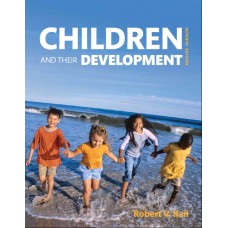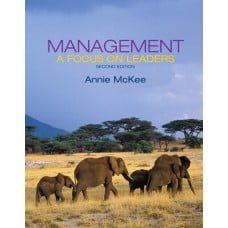Solution Manual for Kail, Children and Their Development, 7th Edition
$35.00 Original price was: $35.00.$26.50Current price is: $26.50.
Solution Manual for Kail, Children and Their Development, 7th Edition
This is completed downloadable of Solution Manual for Kail, Children and Their Development, 7th Edition

Product Details:
- ISBN-10 : 0133939170
- ISBN-13 : 978-0133939170
- Author: Robert V. Kail
Organized topically and focused on practice, REVEL for Children and Their Development, Seventh Edition shows students the way scientists actually conduct research and study the discipline. A well-known and respected researcher in the field of child development, author Robert V. Kail provides a path to explore the theory, research, and application of modern child development from conception through adolescence. REVEL for Children and Their Development’s accessible writing, modular format, and application-based features are designed to work together to help students see how research translates into practice.
Table of Content:
- Title Page
- Copyright Page
- Acknowledgments
- Contents
- Welcome
- About the Author
- 1 The Science of Child Development
- 1.1 Setting the Stage
- Historical Views of Children and Childhood
- Origins of a New Science
- Applying Results of Research
- 1.2 Foundational Theories of Child Development
- The Biological Perspective
- The Psychodynamic Perspective
- The Learning Perspective
- The Cognitive-Developmental Perspective
- The Contextual Perspective
- 1.3 Themes in Child-Development Research
- Continuity of Development
- Impact of Nature and Nurture
- The Active Child
- Links Between Different Domains of Development
- 1.4 Doing Child-Development Research
- Measurement in Child-Development Research
- General Designs for Research
- Designs for Studying Age-Related Change
- Ethical Responsibilities
- Communicating Research Results
- See for Yourself
- Summary
- Test Yourself
- Key Terms
- 2 Genetic Bases of Child Development
- 2.1 Mechanisms of Heredity
- The Biology of Heredity
- Single Gene Inheritance
- Cultural Influences: Why Do African Americans Inherit Sickle-Cell Disease?
- Genetic Disorders
- Improving Children’s Lives: Genetic Counseling
- 2.2 Heredity, Environment, and Development
- Behavioral Genetics
- Focus on Research: Hereditary Bases of Children’s Peer Relationships
- Paths from Genes to Behavior
- Unifying Themes: Nature and Nurture
- See for Yourself
- Summary
- Test Yourself
- Key Terms
- 3 Prenatal Development, Birth, and the Newborn
- 3.1 From Conception to Birth
- Period of the Zygote (Weeks 1–2)
- Period of the Embryo (Weeks 3–8)
- Period of the Fetus (Weeks 9–38)
- Improving Children’s Lives: Five Steps Toward a Healthy Baby
- 3.2 Influences on Prenatal Development
- General Risk Factors
- Spotlight on Theories: A Theory of the Risks Associated with Teenage Motherhood
- Teratogens
- How Teratogens Influence Prenatal Development
- Prenatal Diagnosis and Treatment
- 3.3 Happy Birthday!
- Labor and Delivery
- Approaches to Childbirth
- Adjusting to Parenthood
- Focus on Research: Links Between Maternal Depression and Children’s Behavior Problems
- Birth Complications
- Cultural Influences: Infant Mortality
- 3.4 The Newborn
- Assessing the Newborn
- The Newborn’s Reflexes
- Newborn States
- Child Development and Family Policy: Safe Sleeping
- Perception and Learning in the Newborn
- Unifying Themes: Continuity
- See for Yourself
- Summary
- Test Yourself
- Key Terms
- 4 Growth and Health
- 4.1 Physical Growth
- Features of Human Growth
- Mechanisms of Physical Growth
- Improving Children’s Lives: What’s the Best Food for Babies?
- The Adolescent Growth Spurt and Puberty
- Cultural Influences: Adolescent Rites of Passage
- Spotlight on Theories: A Paternal Investment Theory of Girls’ Pubertal Timing
- 4.2 Challenges to Healthy Growth
- Malnutrition
- Eating Disorders: Anorexia and Bulimia
- Focus on Research: Evaluating a Program for Preventing Eating Disorders
- Obesity
- Disease
- Accidents
- 4.3 The Developing Nervous System
- Organization of the Mature Brain
- The Developing Brain
- Child Development and Family Policy: Teenagers and the Law
- Unifying Themes: Connections
- See for Yourself
- Summary
- Test Yourself
- Key Terms
- 5 Perceptual and Motor Development
- 5.1 Basic Sensory and Perceptual Processes
- Smell, Taste, and Touch
- Hearing
- Improving Children’s Lives: Hearing Impairment in Infancy
- Seeing
- Integrating Sensory Information
- Spotlight on Theories: The Theory of Intersensory Redundancy
- 5.2 Complex Perceptual and Attentional Processes
- Perceiving Objects
- Attention
- Attention Deficit Hyperactivity Disorder
- Child Development and Family Policy: What’s the Best Treatment for ADHD?
- 5.3 Motor Development
- Locomotion
- Cultural Influences: Cultural Practices That Influence Motor Development
- Fine-Motor Skills
- Focus on Research: Adjusting Grasps to Objects
- Physical Fitness
- Unifying Themes: Active Children
- See for Yourself
- Summary
- Test Yourself
- Key Terms
- 6 Theories of Cognitive Development
- 6.1 Setting the Stage: Piaget’s Theory
- Basic Principles of Piaget’s Theory
- Stages of Cognitive Development
- Piaget’s Contributions to Child Development
- 6.2 Modern Theories of Cognitive Development
- The Sociocultural Perspective: Vygotsky’s Theory
- Cultural Influences: How Do Parents in Different Cultures Scaffold Their Children’s Learning?
- Information Processing
- Core-Knowledge Theories
- 6.3 Understanding in Core Domains
- Understanding Objects and Their Properties
- Focus on Research: Distinguishing Liquids from Solids
- Understanding Living Things
- Understanding People
- Improving Children’s Lives: Theory of Mind in Autism
- Unifying Themes: Active Children
- See for Yourself
- Summary
- Test Yourself
- Key Terms
- 7 Cognitive Processes and Academic Skills
- 7.1 Memory
- Origins of Memory
- Strategies for Remembering
- Knowledge and Memory
- Spotlight on Theories: Fuzzy Trace Theory
- Child Development and Family Policy: Interviewing Children Effectively
- 7.2 Problem Solving
- Developmental Trends in Solving Problems
- Features of Children’s and Adolescents’ Problem Solving
- Scientific Thinking
- Focus on Research: Learning to Design Experiments
- 7.3 Academic Skills
- Reading
- Improving Children’s Lives: Rhyme Is Sublime Because Sounds Abound
- Writing
- Knowing and Using Numbers
- Cultural Influences: Fifth Grade in Taiwan
- Unifying Themes: Active Children
- See for Yourself
- Summary
- Test Yourself
- Key Terms
- 8 Intelligence and Individual Differences in Cognition
- 8.1 What Is Intelligence?
- Psychometric Theories
- Gardner’s Theory of Multiple Intelligences
- Sternberg’s Theory of Successful Intelligence
- Cultural Influences: How Culture Defines What is Intelligent
- 8.2 Measuring Intelligence
- Binet and the Development of Intelligence Testing
- Features of IQ Scores
- Hereditary and Environmental Factors
- Child Development and Family Policy: Providing Children with a Head Start for School
- Impact of Ethnicity and Socioeconomic Status
- Focus on Research: Making Tests Less Threatening
- 8.3 Special Children, Special Needs
- Gifted Children
- Improving Children’s Lives: Fostering Creativity
- Children with Disability
- Spotlight on Theories: Impaired Reading Comprehension Is Impaired Language Comprehension
- Unifying Themes: Nature and Nurture
- See for Yourself
- Summary
- Test Yourself
- Key Terms
- 9 Language and Communication
- 9.1 The Road to Speech
- Elements of Language
- Perceiving Speech
- Child Development and Family Policy: Are Cochlear Implants Effective for Young Children?
- First Steps to Speech
- 9.2 Learning the Meanings of Words
- Understanding Words as Symbols
- Fast Mapping Meanings to Words
- Spotlight on Theories: A Shape-Bias Theory of Word Learning
- Individual Differences in Word Learning
- Focus on Research: Why Does Exposure to Parents’ Speech Increase Children’s Vocabulary?
- Encouraging Word Learning
- Cultural Influences: Growing Up Bilingual
- Beyond Words: Other Symbols
- 9.3 Speaking in Sentences
- From Two-Word Speech to Complex Sentences
- Mastering Grammar
- Improving Children’s Lives: Promoting Language Development
- 9.4 Using Language to Communicate
- Taking Turns
- Speaking Effectively
- Listening Well
- Unifying Themes: Connections
- See for Yourself
- Summary
- Test Yourself
- Key Terms
- 10 Emotional Development
- 10.1 Emerging Emotions
- The Function of Emotions
- Experiencing and Expressing Emotions
- Improving Children’s Lives: “But I Don’t Want to Go to School!”
- Recognizing and Using Others’ Emotions
- Regulating Emotions
- 10.2 Temperament
- What Is Temperament?
- Spotlight on Theories: A Theory of the Structure of Temperament in Infancy
- Hereditary and Environmental Contributions to Temperament
- Cultural Influences: Why Is Yoshimi’s Son So Tough?
- Stability of Temperament
- Temperament and Other Aspects of Development
- Focus on Research: Temperament Influences Outcomes in Adolescence and Adulthood
- 10.3 Attachment
- The Growth of Attachment
- The Quality of Attachment
- Child Development and Family Policy: Determining Guidelines for Child Care for Infants and Toddlers
- Unifying Themes: Active Children
- See for Yourself
- Summary
- Test Yourself
- Key Terms
- 11 Understanding Self and Others
- 11.1 Who Am I? Self-Concept
- Origins of Self-Recognition
- The Evolving Self-Concept
- The Search for Identity
- Cultural Influences: Dea’s Ethnic Identity
- 11.2 Self-Esteem
- Developmental Change in Self-Esteem
- Variations in Self-Esteem Associated with Ethnicity and Culture
- Sources of Self-Esteem
- Low Self-Esteem: Cause or Consequence?
- 11.3 Understanding Others
- Describing Others
- Understanding What Others Think
- Prejudice
- Spotlight on Theories: Developmental Intergroup Theory
- Focus on Research: Who Is Resilient in the Face of Discrimination?
- Child Development and Family Policy: Ending Segregated Schools
- Unifying Themes: Nature and Nurture
- See for Yourself
- Summary
- Test Yourself
- Key Terms
- 12 Moral Understanding and Behavior
- 12.1 Self-Control
- Beginnings of Self-Control
- Influences on Self-Control
- Improving Children’s Self-Control
- Focus on Research: Engaging Preschool Children to Help Them Delay Gratification
- 12.2 Reasoning About Moral Issues
- Piaget’s Views
- Kohlberg’s Theory
- Beyond Kohlberg’s Theory
- Cultural Influences: Lies, White Lies, and Blue Lies
- 12.3 Helping Others
- Development of Prosocial Behavior
- Skills Underlying Prosocial Behavior
- Situational Influences
- The Contribution of Heredity
- Socializing Prosocial Behavior
- 12.4 Aggression
- Change and Stability
- Roots of Aggressive Behavior
- Spotlight on Theories: Social-Information-Processing Theory and Children’s Aggressive Behavior
- Victims of Aggression
- Child Development and Family Policy: The KiVa Antibullying Program
- Unifying Themes: Continuity
- See for Yourself
- Summary
- Test Yourself
- Key Terms
- 13 Gender and Development
- 13.1 Gender Stereotypes
- How Do We View Men and Women?
- Learning Gender Stereotypes
- Focus on Research: Reasoning About Gender-Related Properties
- 13.2 Differences Related to Gender
- Differences in Physical Development and Behavior
- Differences in Intellectual Abilities and Achievement
- Cultural Influences: A Cross-Cultural Look at Gender Differences in Math
- Differences in Personality and Social Behavior
- Frank Talk About Gender Differences
- 13.3 Gender Identity
- The Socializing Influences of People and the Media
- Cognitive Theories of Gender Identity
- Spotlight on Theories: Gender-Schema Theory
- Biological Influences
- 13.4 Gender Roles in Transition
- Emerging Gender Roles
- Beyond Traditional Gender Roles
- Improving Children’s Lives: Encouraging Valuable Traits, Not Gender Traits
- Unifying Themes: Connections
- See for Yourself
- Summary
- Test Yourself
- Key Terms
- 14 Family Relationships
- 14.1 Parenting
- The Family as a System
- Styles of Parenting
- Parental Behavior
- Influences of the Marital System
- Children’s Contributions
- 14.2 The Changing Family
- Impact of Divorce on Children
- Improving Children’s Lives: Helping Children Adjust After Divorce
- Focus on Research: Evaluation of a Program to Help Parents and Children Adjust to Life After Divorce
- Blended Families
- The Role of Grandparents
- Cultural Influences: Grandmothers in African American Families
- Children of Gay and Lesbian Parents
- 14.3 Brothers and Sisters
- Firstborn, Laterborn, and Only Children
- Child Development and Family Policy: Assessing the Consequences of China’s One-Child Policy
- Qualities of Sibling Relationships
- 14.4 Maltreatment: Parent–Child Relationships Gone Awry
- Consequences of Maltreatment
- Causes of Maltreatment
- Preventing Maltreatment
- Unifying Themes: Active Children
- See for Yourself
- Summary
- Test Yourself
- Key Terms
- 15 Influences Beyond the Family
- 15.1 Peers
- Development of Peer Interactions
- Friendship
- Focus on Research: Influence of Best Friends on Sexual Activity
- Romantic Relationships
- Groups
- Popularity and Rejection
- Cultural Influences: Keys to Popularity
- 15.2 Electronic Media
- Television
- Improving Children’s Lives: Get the Kids Off the Couch!
- New Media
- 15.3 Institutional Influences
- Child Care and After-School Activities
- Part-Time Employment
- Neighborhoods
- Spotlight on Theories: The Family Economic Stress Model
- School
- Unifying Themes: Continuity
- See for Yourself
- Summary
- Test Yourself
- Key Terms
- Glossary
People Also Search:
kail children and their development 7th
kail children and their development 7th edition
kail children and their development 7th download scribd
kail children and their development 7th solution manual download pdf
Related products
Solution Manual
Prentice Hall’s Federal Taxation 2014 Comprehensive Rupert 27th Edition Solutions Manual
Solution Manual
Solution Manual
Solution Manual
Solution Manual for Introduction to Robotics Mechanics and Control 3rd Edition by Craig
Solution Manual
International Business Competing in the Global Marketplace Hill 10th Edition Solutions Manual
Solution Manual
Solution manual for Accounting: Tools for Business Decision Making Kimmel Weygandt Kieso 5th Edition











